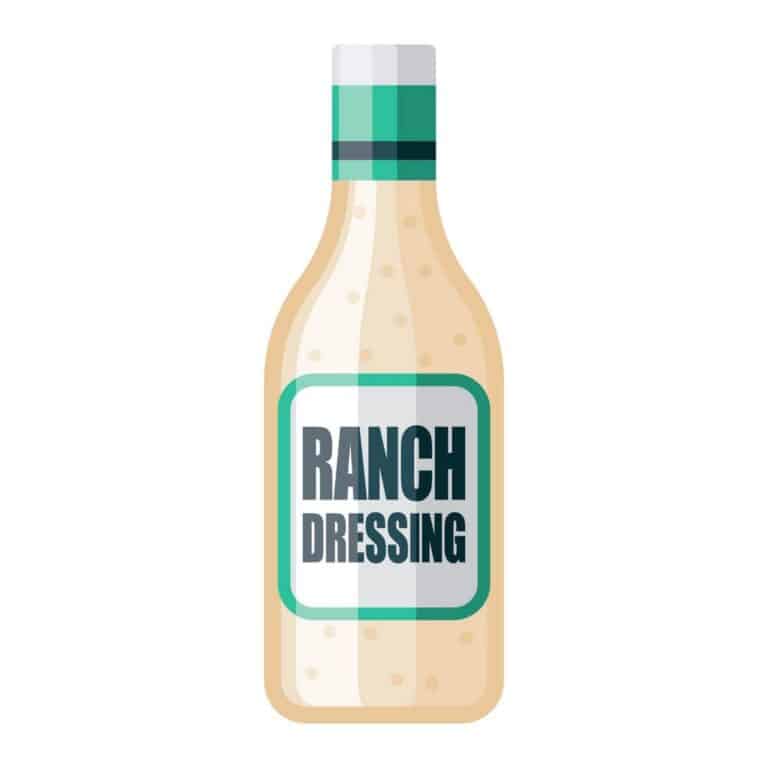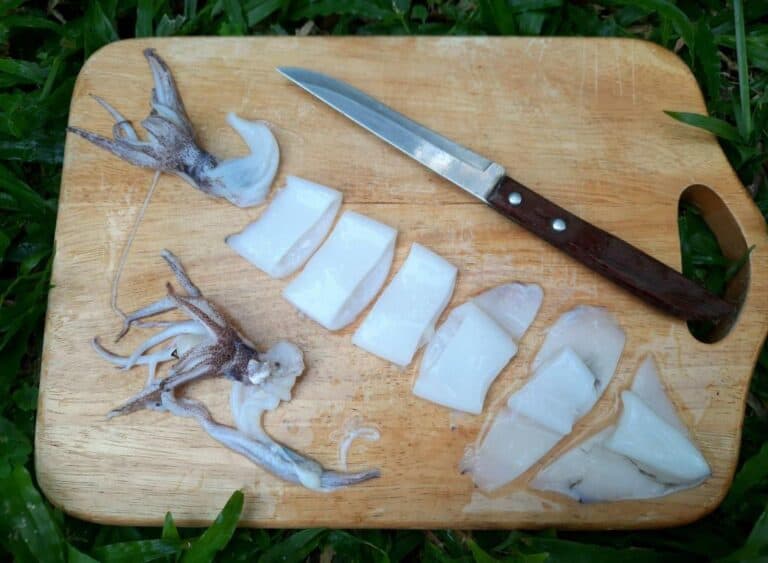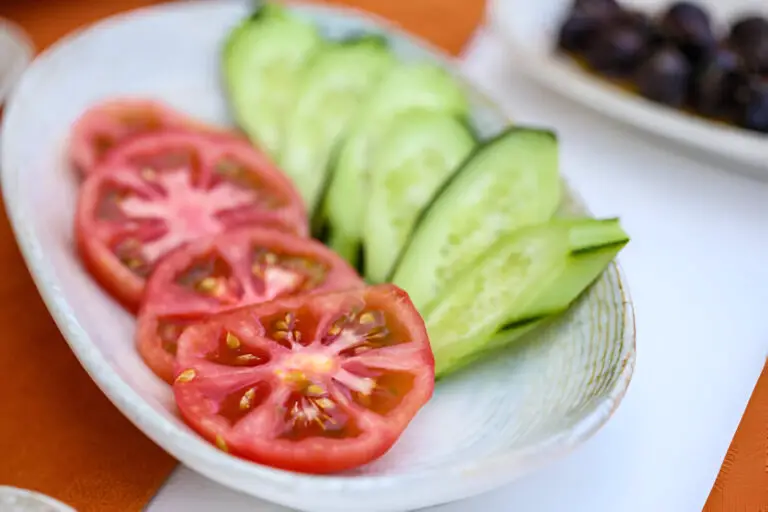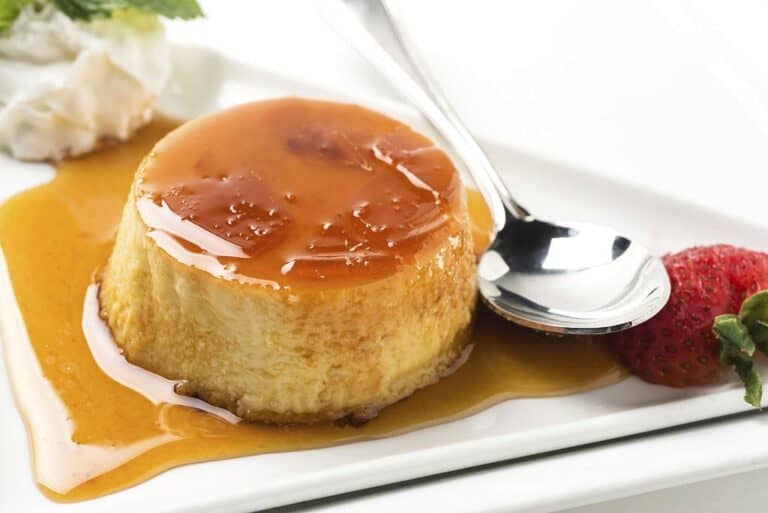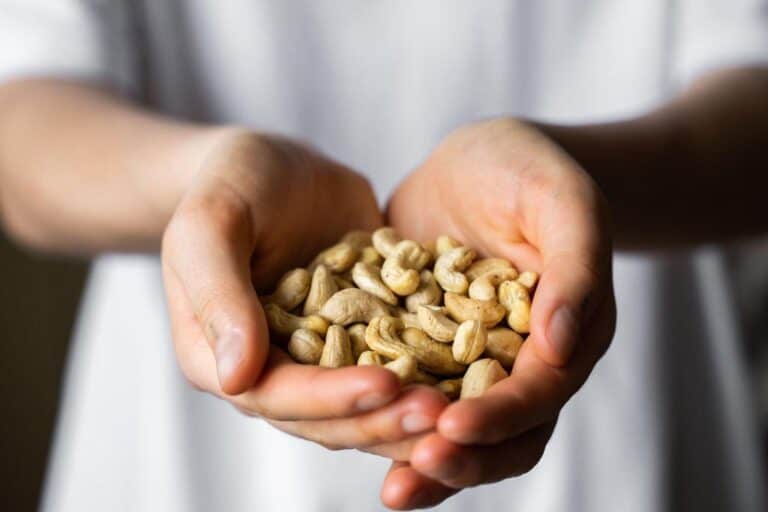Can You Eat Hachiya Persimmon Skin? Is Its Peel Safe to Eat?
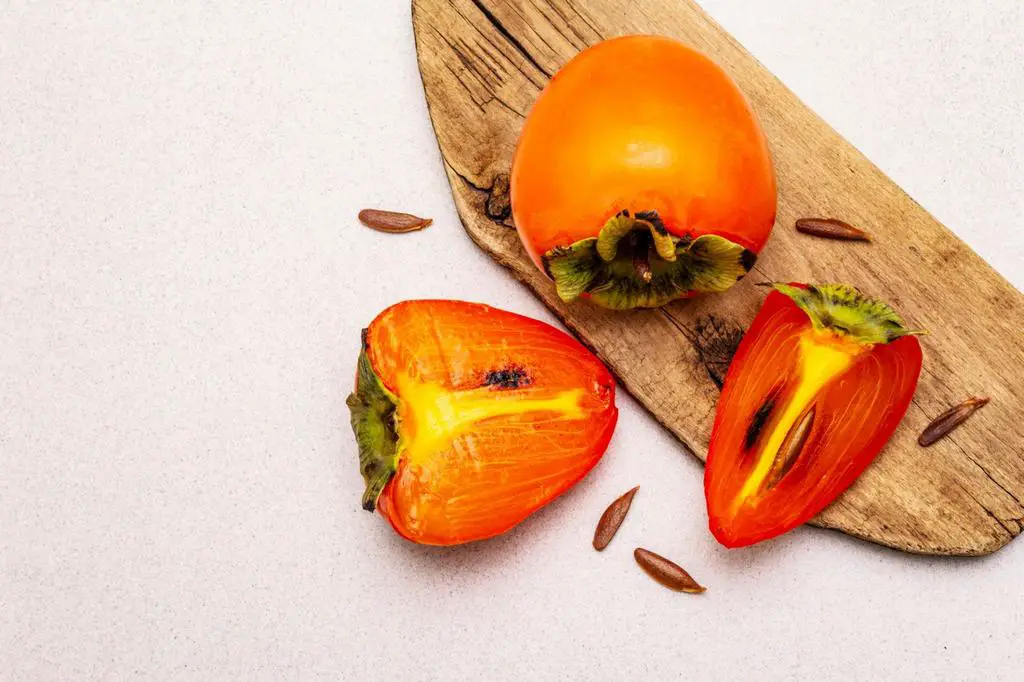
In the realm of exotic fruits, the Hachiya persimmon reigns supreme, captivating both the curious and the culinary enthusiasts. But a pressing question lingers: Can You Eat Hachiya Persimmon Skin? Is Its Peel Safe to Eat?
Yes, you can eat Hachiya Persimmon skin, but the ripeness of the persimmon is a crucial factor in determining whether the skin is safe to eat. Hachiya persimmons should not be eaten until they are fully ripe, which means they are soft and about to burst.
Before they reach peak ripeness, they will have a chalky taste that is virtually inedible, and their skins are not safe to eat.
Join us as we peel back the layers of mystery and dive into the world of this captivating fruit. Get ready to discover not just answers but a whole new perspective on savoring nature’s bounty.
The Delightful Hachiya Persimmon
Before we talk about how amazing it is to eat the skin of a Hachiya persimmon, let us take a moment to admire this amazing fruit. The Hachiya persimmon, scientifically known as Diospyros kaki, is renowned for its heart-like shape and vibrant orange hue that beckons to be savored. Native to Japan, this fruit has captured the hearts and palates of people worldwide.
Hachiya persimmons are characterized by their distinct astringency when unripe. The flesh is exceptionally rich and tender, with a flavor profile that dances between sweet and floral notes. This unique combination makes the Hachiya persimmon a sought-after ingredient in both sweet and savory dishes.
These fruits are packed with essential vitamins and minerals, making them a great addition to your diet. They’re a good source of vitamin A, vitamin C, dietary fiber, and antioxidants. These elements contribute to healthy immune function, skin health, and digestion.
Can You Eat Hachiya Persimmon Skin?
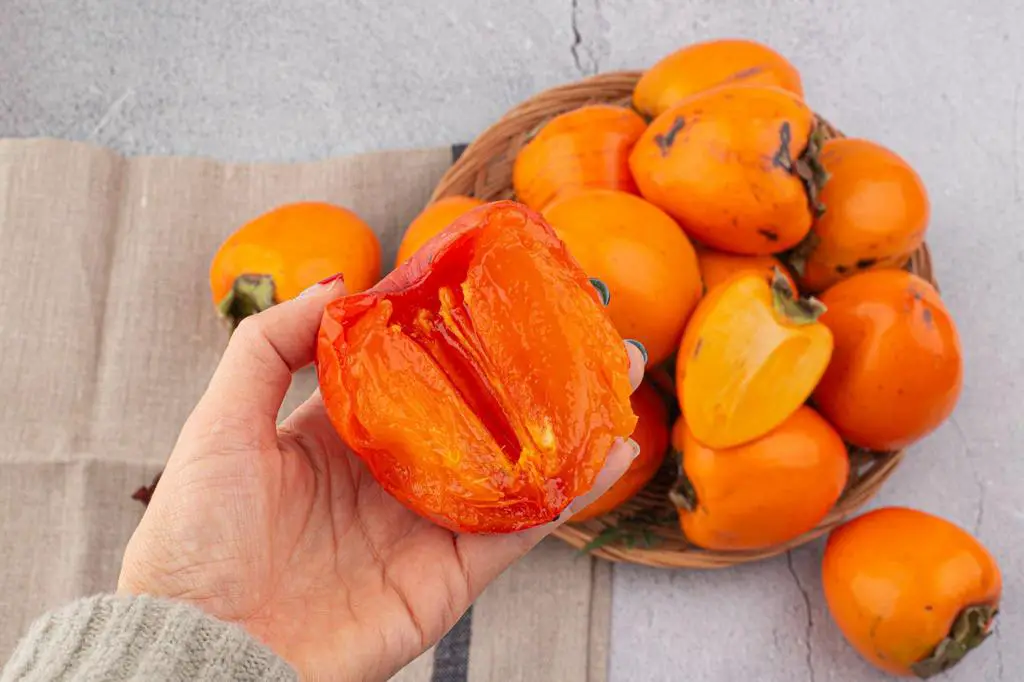
Now, let’s address the pivotal question: Can you eat the skin of a Hachiya persimmon? The answer is yes; you can eat the skin, but there are some factors to consider.
1. Texture and Taste
The skin of a ripe Hachiya persimmon is delicate and thin. When you bite into it, you’ll notice that it adds a subtle yet enjoyable texture to the overall eating experience. The skin is smooth and blends harmoniously with the tender flesh beneath. As for the taste, the skin carries a mild sweetness that complements the natural sugars of the fruit.
2. Nutrient Content
The skin of a Hachiya persimmon also contains valuable nutrients. It’s a source of dietary fiber, which aids in digestion and promotes a feeling of fullness. Moreover, the skin holds antioxidants that contribute to your body’s defense against harmful free radicals.
3. Presence of Tannins
It’s important to address the presence of tannins in persimmon skin. Tannins are compounds found in various plant foods, and in some cases, they can create a slightly astringent or dry sensation in the mouth. Unripe persimmons, including their skin, tend to have higher levels of tannin. However, when a Hachiya persimmon ripens fully, the tannin content decreases significantly, rendering the skin pleasantly edible.
Benefits of Consuming Persimmon Skin
Now that we’ve established the safety of persimmon skin, let’s explore why you might want to include it in your diet.
1. Dietary Fiber
Persimmon skin contains dietary fiber, which plays a vital role in maintaining a healthy digestive system. Fiber adds bulk to your stool and promotes regular bowel movements. By eating the skin, you enhance the overall fiber content of the fruit, contributing to better digestion.
2. Antioxidant Properties
The skin of Hachiya persimmons is rich in antioxidants, which are compounds that combat oxidative stress in your body. Oxidative stress can lead to cellular damage and is associated with various chronic diseases. By consuming antioxidant-rich foods like persimmon skin, you support your body’s defense mechanisms.
3. Contribution to Gut Health
The dietary fiber found in persimmon skin isn’t just beneficial for digestion—it also promotes a healthy gut environment. Fiber acts as a prebiotic, providing nourishment for the beneficial bacteria in your gut. A balanced gut microbiome is linked to improved immune function and overall well-being.
Food Safety and Handling of Persimmon Skin
When it comes to enjoying Hachiya persimmons and their skin, proper food safety and handling practices are essential. Let’s delve into the best ways to ensure a safe and delightful consumption experience.
1. Proper Washing Techniques
Before you indulge in the goodness of Hachiya persimmons and their skin, it’s crucial to wash them thoroughly. Follow these steps to ensure that your persimmons are clean and ready to be enjoyed:
- Rinse: Hold the persimmon under cool running water.
- Gently Scrub: Use a soft brush to gently scrub the surface, removing any dirt or residue.
- Dry: Pat the persimmon dry with a clean paper towel.
2. Storage Methods
To preserve the freshness of your Hachiya persimmons, proper storage is key. Here’s how you can make the most of these delectable fruits:
- Ripening: If your persimmons are not fully ripe when you purchase them, leave them at room temperature until they soften. You can speed up the ripening process by placing them in a paper bag.
- Refrigeration: Once fully ripe, you can store persimmons in the refrigerator to extend their shelf life. Keep them in the crisper drawer to maintain their texture and flavor.
3. Tips to Minimize Contamination Risks
Ensuring that your persimmons and their skin remain safe for consumption involves minimizing contamination risks. Here are some practical tips to keep in mind:
- Clean Surfaces: Wash your hands, utensils, and cutting board before handling persimmons.
- Separation: Avoid cross-contamination by keeping persimmons away from raw meats and other potential sources of bacteria.
- Prompt Consumption: Consume ripe persimmons in a timely manner to prevent overripening and potential spoilage.
4. Allergies and Sensitivity
If you have known allergies or sensitivities to certain fruit skins, exercise caution and consider a small sample to gauge your body’s reaction. As with any new addition to your diet, moderation is key.
Other Edible Parts of Hachiya Persimmons
Hachiya persimmons offer more than just their skin for consumption. Let’s explore the other edible parts and the culinary possibilities they bring.
Consuming the Flesh and Seeds
The soft, luscious flesh of a ripe Hachiya persimmon is a true delight. Slice it open, and you’ll find a rich, sweet interior that’s perfect for enjoying as is or incorporating into various dishes. The seeds within the flesh are also edible, although they may be slightly bitter. If you prefer a smoother texture, you can choose to remove the seeds before consumption.
Culinary Applications of the Flesh
The versatility of Hachiya persimmon flesh shines through in culinary creations. Here are a few ways to savor the deliciousness:
- Smoothies: Blend the flesh into smoothies for a naturally sweet and flavorful boost.
- Baking: Add persimmon slices to muffins, cakes, or pies for a unique twist.
- Salads: Toss persimmon chunks into salads to infuse a burst of sweetness and color.
Nutritional Aspects of the Seeds
While often overlooked, the seeds within Hachiya persimmons also hold nutritional value. These tiny seeds contain small amounts of healthy fats, fiber, and nutrients. However, keep in mind that their slightly bitter taste might not be to everyone’s liking.
Common Misconceptions and Myths
In the world of persimmons and their skin, misinformation can abound. Let’s clear up some common misconceptions and address prevalent myths.
Hachiya persimmons are a delicious and wholesome fruit, but there are many myths and misconceptions about them. Here are some common ones:
- All Persimmons Can Be Eaten When Firm. This is perhaps the most common misconception. Hachiya persimmons are astringent when firm, which means they are not ripe and can be extremely bitter. Many people who have tried an unripe hachiya persimmon mistakenly believe that all persimmons are inedible when firm. Fuyu persimmons, for example, are non-astringent and can be enjoyed when they are still firm.
- Hachiya Persimmons Are Always Sweet: While ripe hachiya persimmons are indeed sweet and delicious, some people may assume they are sweet even when they are firm. Eating an unripe hachiya persimmon can be a very unpleasant experience due to its extreme astringency.
- They Should Be Eaten All With Skin Intact: Some people believe that you should eat the skin of a hachiya persimmon. While the skin is edible, it can have a slightly bitter taste, and many people prefer to scoop out the flesh and discard the skin.
- Hachiya Persimmons Are Difficult to Ripen: It’s a myth that hachiya persimmons are difficult to ripen. They do require patience and should be allowed to ripen at room temperature until they are soft and jelly-like inside. This process can take several days to a week, but it’s not particularly challenging.
- They Are Only Good for Fresh Eating: While hachiya persimmons are delightful when eaten fresh, they can also be used in various culinary applications. They can be used in baking, desserts, smoothies, and even savory dishes like salads.
- They Are High in Calories: While hachiya persimmons are higher in calories than some other fruits, they are not excessively high in calories. They provide a good source of vitamins A and C, dietary fiber, and antioxidants, making them a nutritious addition to your diet.
- They Can Be Eaten Like Apples or Pears: Hachiya persimmons have a unique texture and flavor profile, and they are not typically eaten like apples or pears. Their jelly-like, custard-like flesh makes them more suitable for scooping out with a spoon or using in recipes.
- They Are Only Grown in Asia: While hachiya persimmons are native to Asia and are commonly grown there, they can also be found in other parts of the world, including North America, where they are cultivated.
Conclusion
Hachiya persimmons, when ripe, are a delectable treat on their own, with their sweet, jelly-like flesh. But what about the skin? Many wonder if it’s safe to eat. The answer is a resounding yes. The skin of a ripe Hachiya persimmon is indeed safe to eat, and it brings valuable nutrients and benefits to the table.
When it comes to the healthiness of Hachiya persimmon peel, you’ll be pleased to know that it’s packed with dietary fiber. Fiber is essential for digestion and can help regulate bowel movements. Persimmon skin is also rich in antioxidants, which can combat harmful free radicals in the body and contribute to overall well-being.
But the benefits of eating persimmon skin go beyond just fiber and antioxidants. It can also be beneficial for gut health. The fiber in the skin acts as a prebiotic, nourishing the beneficial bacteria in your digestive system. A healthy gut microbiome is linked to better digestion and improved immune function.
The texture of Hachiya persimmon skin, when ripe, is smooth and tender, making it pleasant to eat. You can enjoy it sliced along with the fruit for a well-rounded taste experience. Alternatively, you can get creative with culinary uses for Hachiya persimmon skin. It can be thinly sliced and added to salads for a delightful crunch or even blended into smoothies to boost their nutritional content.
In conclusion, the skin of a ripe Hachiya persimmon is not only safe to eat but also offers a range of valuable nutrients and benefits. Whether you choose to consume it alongside the fruit or explore its potential in various recipes, embracing persimmon skin opens up a world of culinary possibilities. So, the next time you savor a juicy Hachiya persimmon, remember that its skin is a delightful and nutritious component of the whole experience.

